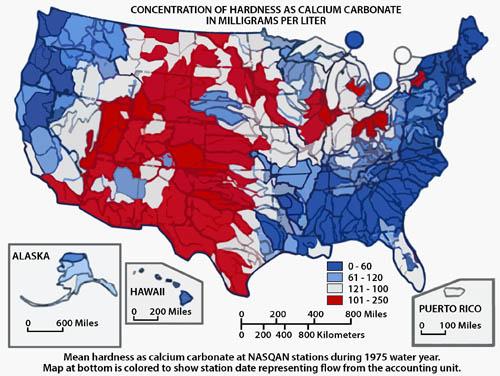For All Enquiries 1(775) 324 2400 - Sales 24/7 1(877) 540 4154
Espanol (Cesar Medina) 1(877) 540 4154
Do I Need a Water Softener?

| = Soft Water System |
| All other colors = Standard / Hard Water Filtration Systems |
To tell if you have hard or soft water you can look at the map shown above. This a map of hardness levels typical throughout the US, and if you are in an area shown as dark blue on the map you will want to use the Soft Water System, for all other colored areas on the map you will probably want to use the Hard/ Normal Water System. These are approximations only and generally accurate. However, if you know your water to be harder or softer than shown, defer to your own information.
If you would like to know the exact amount of hardness in your area you can easily look it up online. From a copy of a recent water bill, locate the name of your local water provider. Perform a Google search for the name of your provider with "annual water quality report" or "consumer confidence report". Example: "Anytown Water Co. annual water report" and you can find your water report. On this report look at the numbers for "Total Dissolved Solids", sometimes called TDS for short. If this number is over 75 you will want to purchase the Hard Water System, if it is under 75 you would want to you will want to purchase the Soft Water System. Some companies elect to not display this number. If this is the case, call the company and inquire.
Another less technical way to tell is to look at drinking glasses, cookware, mirrors to see if you have a whitish build up on them. If you do, you are in a hard water area. This may also be on shower doors and your faucet tips. A fun way to test for this is to fill a clean clear glass with water and place it in a sunny windowsill until it evaporates, if you see rings at the bottom, no matter how faint, you have hard water. If the glass is clear you are on a softer water supply.


